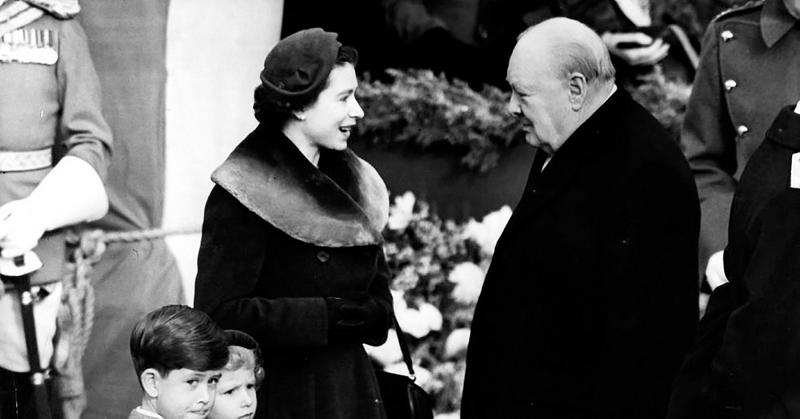When Winston Churchill Retired: And The Queen Broke Protocol At His Funeral
By | April 3, 2021

It's likely that if Queen Elizabeth II had never ascended the throne, Winston Churchill would have retired a lot earlier than he did. She was only in her twenties when she became queen, and he was there to provide a steady hand when she was just learning how to be a leader. Churchill's mind for government and his friendship were so important to Elizabeth that when he died in 1965, she broke protocol at his funeral.
Churchill's Last Run
By the end of World War II, the British public was understandably exhausted. More so than their American counterparts in the Allied Forces, the English spent the entirety of the war in the middle of things. They were bombed, ransacked, and terrorized by the German military, and as prime minister, Winston Churchill led his people through that awful moment in history. Even with his leadership prowess at its peak, the people of England needed a break. It didn't help that Churchill and his Conservative Party botched his reelection campaign in 1945 by painting the Labor Party as pseudo-fascists at a time when the English people wanted to take the country back to its working-class roots.
Labor leader Clement Attlee won the election, but Churchill wasn't finished with politics. For the next six years, he led the Conservative Party and pushed for a strong alliance with the United States. When the Conservatives won the 1951 general election, it made sense to reestablish him in the role of prime minster, even if he was 77 years old. By the end of the year, George VI asked Churchill to step down after the prime minister had a series of minor strokes, but the king died just a few months later, so Churchill held firm and began a friendship with Elizabeth II.

Friend Of The Queen
Elizabeth was only 26 years old when she ascended the throne, so she was grateful to have such an old hand at the other wheel of the country. Out of deference to the man who had given so much of his life to the United Kingdom, she offered to make Churchill the Duke of London. The archaic title and nebulous duties that go along with the dukedom of a major metropolitan city didn't appeal to Churchill or his son and heir, however, so the former Prime Minister accepted a knighthood instead.
On April 24, 1953, Churchill was knighted, and he wasn't done receiving accolades. That same year, he received the Nobel Prize in literature "for his mastery of historical and biographical description as well as for brilliant oratory in defending exalted human values." It was also the same year the few people who were aware of Churchill's failing health began drafting Operation Hope Not, a plan for how to carry out his funeral that was detailed to the second.
The final years of Churchill's time in office were somewhat disappointing for him. He hated that Eisenhower won the presidency, and after meeting with the Soviets and Eisenhower one last time, Churchill retired. By 1960, he was the only member of Parliament to be elected under both Queen Victoria and Elizabeth II and made Father of the House. Even with this distinction, he spent most of his time at his home in Hyde Park Gate or on the French Riviera.

Breaking Protocol
In 1962, at the age of 87, Churchill suffered a fall and broke his leg in Monte Carlo. He was flown back to England but remained in such poor condition that he was unable to attend a service held by President Kennedy naming the former prime minister an honorary citizen of the United States. On January 12, 1965, Churchill suffered his last stroke. He held on for two weeks before passing away on the 17th anniversary of his father's death.
The plan laid out in 1953 was finally implemented, but Queen Elizabeth took a personal interest in ensuring the funeral was "on a scale befitting his position in history." In a letter of condolence to Lady Churchill, she wrote:
The whole world is the poorer by the loss of his many-sided genius while the survival of this country and the sister nations of the Commonwealth, in the face of the greatest danger that has ever threatened them, will be a perpetual memorial to his leadership, his vision and indomitable courage.
Churchill's body lay in state between January 27 and 30 so the public could pay their final respects, and the queue was often a mile long, with more than 300,000 people waiting to say goodbye. His funeral was then held at St. Paul's Cathedral, where the Queen broke protocol to convey her reverence for the late prime minister. She's supposed to be the last person to show up at any function, official or not, but she decided it would be more respectful to Churchill's family to get all the fuss over with before they arrived. Following the funeral, Churchill's coffin was loaded onto a boat that floated along the River Thames to a family plot near his birthplace at Blenheim Palace.

